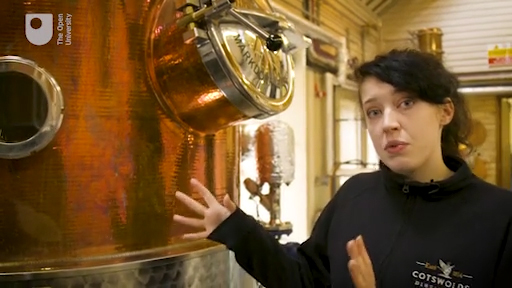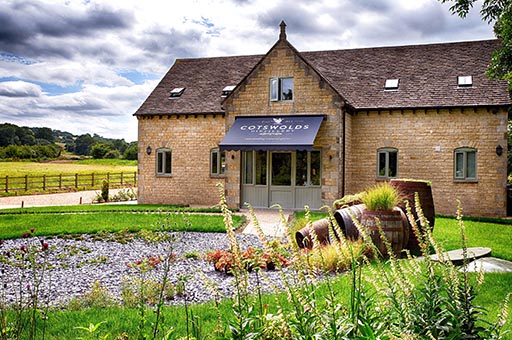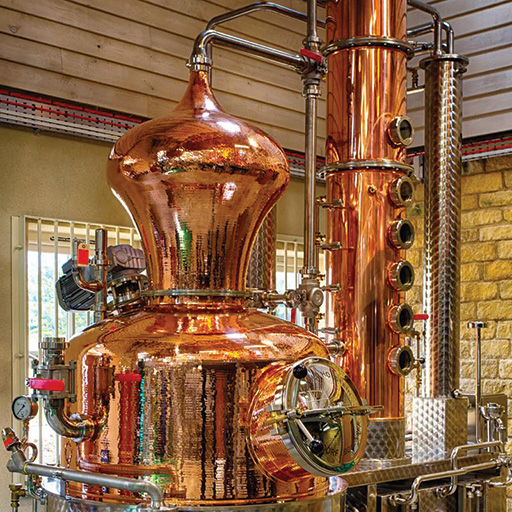4 Exploring a working distillery
The Cotswold Distillery located in the Cotswold village of Shipston-on-Stour has been producing gin and whisky commercially on a small scale since 2014 using the process of distillation (Figure 3).
In the following video, distiller Sarah MacLellan from the Cotswold Distillery explains the distilling process used to produce their unique gin.

Transcript
Looking back to our laboratory-scale distillation, can you make a list of the similarities between the two processes, despite their obvious differences in scale?
The basic principle of distillation remains the same, whether the distillation is occurring on a laboratory or on a commercial scale. At a temperature corresponding to the boiling point of ethanol (78 °C) the distillate is collected for conversion into the final gin product. A similar apparatus is used for the distillation, for example a water-cooled condenser to condense the vapour back into the liquid phase again.
The process of gin distillation is actually far simpler than you may think and, although different distilleries will have different production methods for their own specific gins, the process starts off in the same way.
Gin always starts from a blank canvas – a completely flavourless base spirit, typically around 96% ABV in strength. This is known as neutral grain spirit.
Different distilleries will distil this base spirit in the presence of a closely guarded recipe of botanicals to produce their own unique products.
Typically, distillation will occur within a copper still (Figure 4). The copper itself actually plays a number of important roles in the distillation process. The copper is an excellent conductor of heat and it disperses the heat evenly over the surface of the still, allowing the distillation process to be very efficient. But the copper is also thought to strip out any volatile sulfuric compounds which are produced as the gin distils, a process which removes any unwanted flavours and aromas from the final product.
So, during the distillation process, with this ability of copper in mind, the still is only filled to three-quarters capacity to ensure that there is sufficient space for the volatile vapours to have plenty of contact with the copper during distillation. The base botanicals are then added – the all-important juniper berries, coriander seed and angelica root – and these macerate (soften) for fifteen hours overnight. It is important that the botanicals are not ‘cooked’ and are instead allowed to infuse into the neutral grain spirit. The following morning the remainder of the botanicals are added.
You will now learn about how unique flavours and aromas are incorporated into specific gins.


